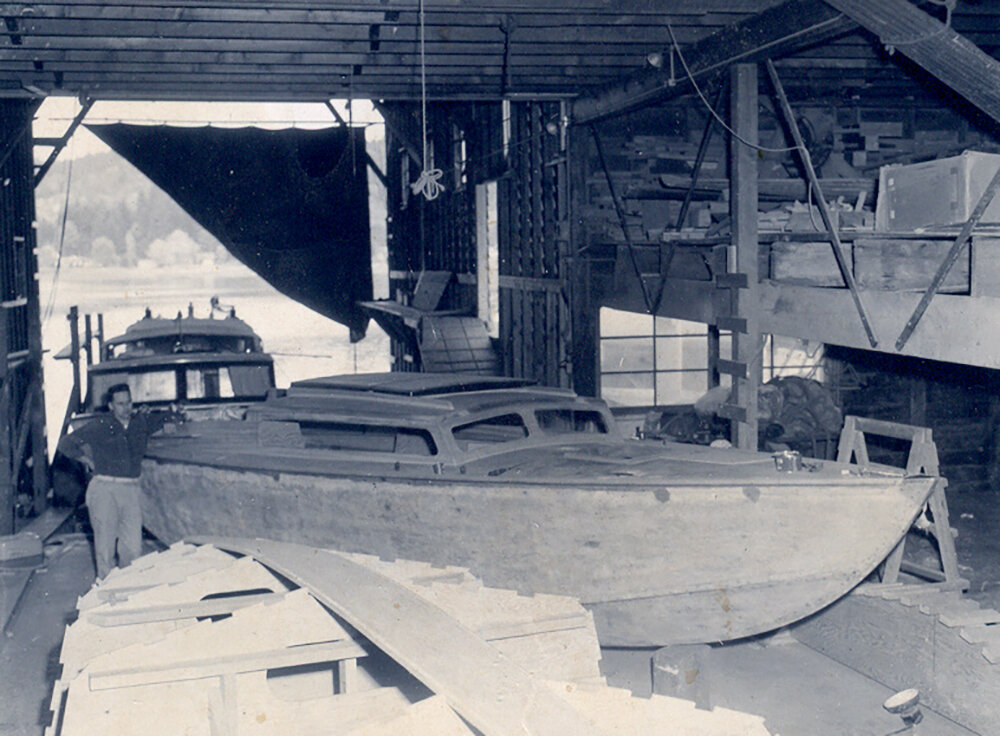
History of the Thunderbird
In 1957, the Douglas Fir Plywood Association mailed out a challenge to area boat designers and boatbuilders. The challenge? Build a plywood sailboat that could race and cruise, sleep four, be built by reasonably skilled amateurs, be powered by an outboard engine, and out-perform other sailboats in its class.
Thunderbird #3 "Windsong" is shown with hull, house, and deck completed. Thunderbird #2 "Pirouette" is shown lower left (she rests upside down; ready for plywood planking).
Ben Seaborn, a notable yacht designer of the period, took on the challenge. Having been involved with Hoppen’s Eddon Boat Company during the building of the Nautilus IV, a Seaborn design, he knew Ed Hoppen was intrigued by the use of plywood for sailboat construction. Seaborn came to Gig Harbor and met with Hoppen. Over several cups of coffee at the dining room table in the brick house adjoining boatyard, the Thunderbird creative partnership was cemented. Unfortunately, the batch of boat sketches on napkins didn’t survive.
Hoppen and Eddon Boat Company employees Herb Schuey and Phil Manley worked through the construction details during the construction of T-Bird No. 1. As it turned out, No. 1 was overbuilt as both Hoppen and Seaborn underestimated the strength of the plywood construction. Thunderbird # 1 was launched in November of 1958 and she exceeded all expectations, not only for strength, but also for speed and handling. Construction details as well as some design details were modified for subsequent boats.
Thunderbirds #2 and #3, Pirouette and Windsong, built simultaneously at Eddon Boat Company can be viewed as the true prototype T-Birds. Those two boats defined the building plans that were used by hundreds of homebuilders.
Today, there are well over a thousand Thunderbirds worldwide with fleets on the east and west coasts of Australia and the United States. Thunderbird No. 1 is on display at the Harbor History Museum, a short walk away from the Eddon Boatyard. No. 2, Pirouette, was purchased by the Gig Harbor BoatShop and lovingly restored at the Eddon Boatyard by our talented volunteers and is used for the Community Sailing Program here in Gig Harbor.
